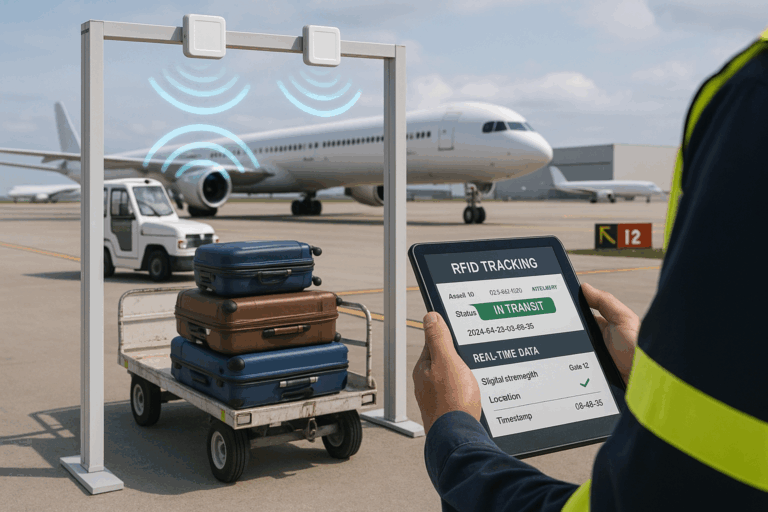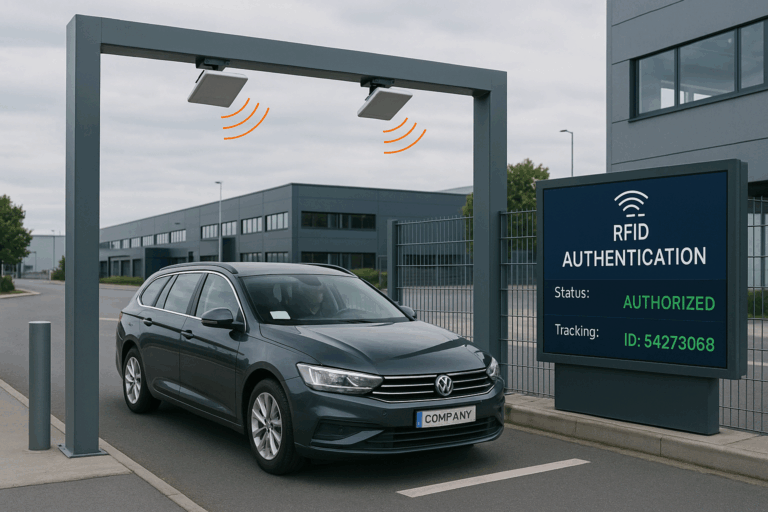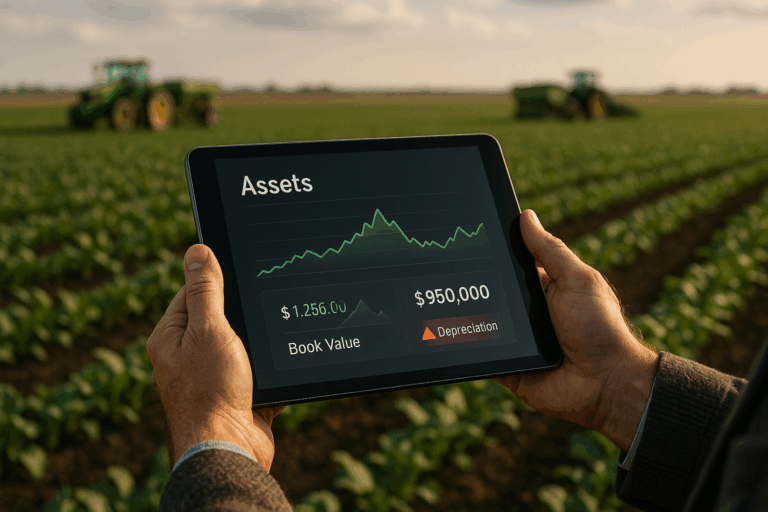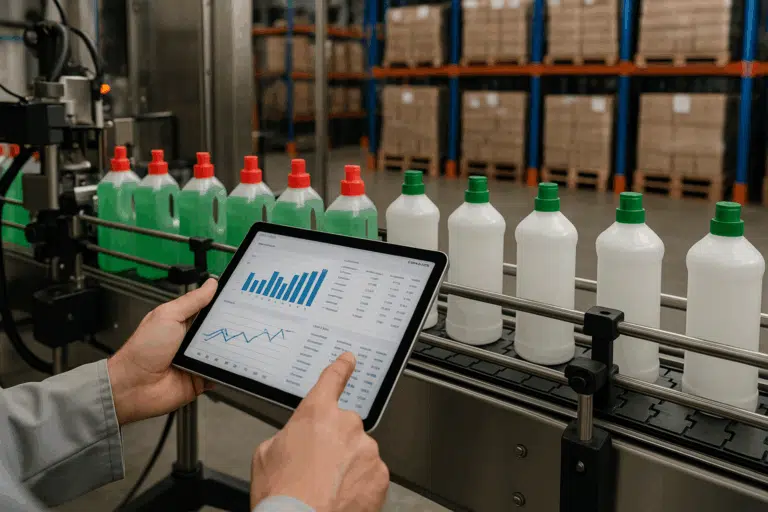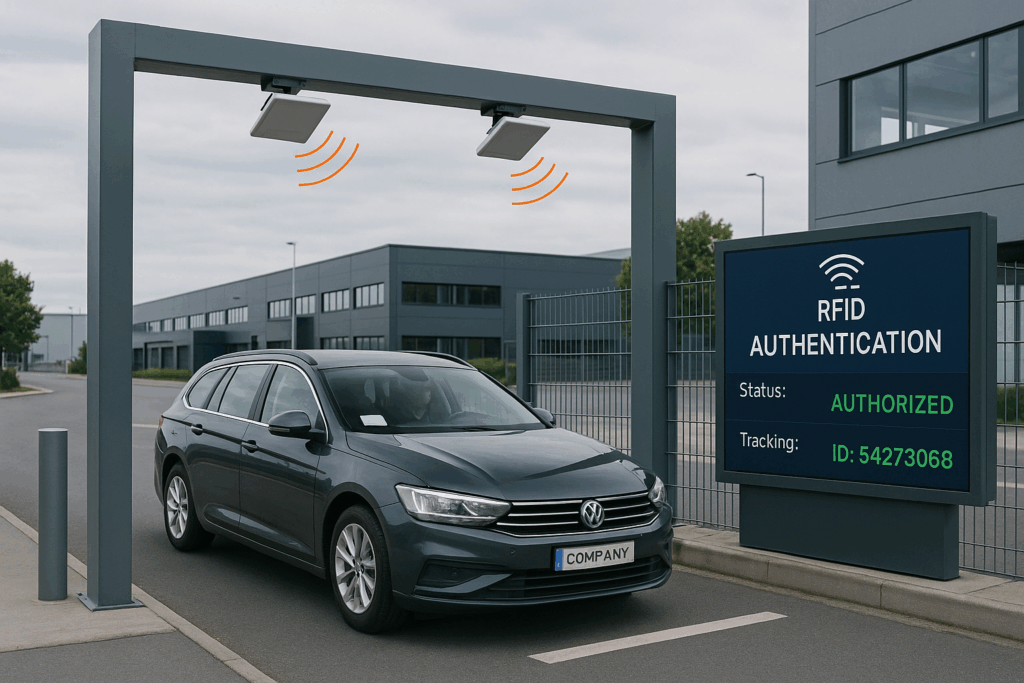Barcode asset tracking software plays a pivotal role in revolutionizing business operations by providing an advanced, efficient, and systematic approach to asset management. This technology brings heightened accuracy and automation to asset tracking processes, eliminating manual errors and streamlining workflows.
By assigning unique barcodes to assets, companies gain real-time visibility into their entire asset inventory, facilitating easy tracking, monitoring, and retrieval. The software’s centralized database ensures up-to-date information, enabling data-driven decision-making and optimized resource allocation. With improved asset utilization and reduced downtime, businesses can enhance productivity and profitability.
Moreover, barcode asset tracking software enables proactive maintenance scheduling, preventing unexpected breakdowns and prolonging asset lifecycles. As a result, companies can drive operational efficiency, cut costs, and ensure compliance, making barcode asset tracking software a crucial tool for businesses seeking to enhance their competitiveness and achieve sustainable growth in today’s dynamic market landscape.
Table of Contents
ToggleWhat is Barcode Asset Tracking Software?
Barcode asset tracking software is a powerful tool designed to streamline and enhance asset management processes in businesses and organizations. Its primary purpose is to provide an efficient and accurate way to track, monitor, and control assets throughout their lifecycle. The software works by assigning unique barcodes to each asset, which may be equipment, inventory, tools, or any tangible item of value.
These barcodes act as identifiers for the assets and contain relevant information, such as asset type, location, purchase date, maintenance history, and more. To utilize the software, users can scan the barcodes using handheld barcode scanners or mobile devices with integrated cameras. The scanned data is then automatically recorded and updated in a centralized database accessible to authorized personnel.
This real-time data visibility enables businesses to track the location and status of assets, schedule maintenance, and make informed decisions about resource allocation, leading to improved efficiency, reduced manual errors, and overall streamlined asset management processes.
The Benefits of Using Barcode Asset Tracking Software
Implementing barcode asset tracking software in your business offers a plethora of advantages that can significantly enhance overall efficiency and productivity. Firstly, the software provides real-time visibility into your asset inventory, enabling accurate tracking and monitoring of asset locations and status, minimizing the risk of loss or theft.
Secondly, it streamlines asset management processes by automating data capture, reducing manual errors, and optimizing workflows, leading to time and cost savings. With centralized and up-to-date information on asset maintenance history and usage patterns, businesses can make data-driven decisions, improve resource allocation, and extend the lifespan of assets. Moreover, the software enhances regulatory compliance by ensuring proper record-keeping and audit trails. Proactive maintenance scheduling based on the software’s insights prevents unexpected breakdowns and reduces downtime.
Overall, barcode asset tracking software empowers businesses with better control, increased productivity, and improved financial management, making it an invaluable tool for sustainable growth and success in today’s competitive landscape.
Key Features of Barcode Asset Tracking Software
When selecting a barcode asset tracking software, several essential features should be considered to ensure optimal functionality and seamless asset management. Firstly, robust barcode scanning capabilities are crucial, supporting various barcode formats and offering compatibility with both handheld scanners and mobile devices.
The software should have a centralized database with real-time synchronization, providing instant access to asset information for authorized users from any location. Customizable fields and data capture options allow tailoring the system to specific asset types and business needs. Integration capabilities with other business systems, such as ERP or CMMS, facilitate seamless data exchange and streamlined workflows. Comprehensive reporting and analytics features provide valuable insights into asset utilization, maintenance history, and lifecycle, aiding in data-driven decision-making.
Additionally, user access controls and audit trails ensure data security and regulatory compliance. Lastly, scalability and ease of implementation are vital factors to consider, allowing the software to grow alongside the business and ensuring a smooth transition to the new asset tracking system. By carefully evaluating these essential features, businesses can choose a barcode asset tracking software that maximizes efficiency, productivity, and return on investment.
Integration Capabilities
Barcode asset tracking software integration plays a pivotal role in enhancing asset tracking by promoting seamless data flow and providing a comprehensive view of asset-related information. When integrated with other business systems like ERP, CMMS, or inventory management software, barcode asset tracking software enables real-time data synchronization, reducing data silos and redundancies.
This integration ensures that asset-related data is consistently updated and accessible across the organization, facilitating accurate asset tracking, monitoring, and reporting. By combining asset tracking data with financial and maintenance information, businesses can make more informed decisions about resource allocation, maintenance schedules, and procurement strategies.
Moreover, integration allows for automated workflows and alerts, triggering actions such as maintenance requests or restocking orders based on asset usage or condition. Overall, barcode asset tracking software integration optimizes asset management processes, improves operational efficiency, and empowers businesses to maximize the value and lifespan of their assets, leading to enhanced productivity and cost-effectiveness.
Customization Options
Barcode asset tracking software customizations refer to the ability to tailor the software’s features and functionalities to meet the specific needs and workflows of a business. Customizations allow businesses to adapt the software to their unique asset tracking requirements, ensuring seamless integration with existing processes and systems. Some common customizations include the ability to add and configure data fields according to the types of assets being tracked, designing custom barcode labels, and setting up unique user access controls to manage data security.
Additionally, customizable reporting and analytics features enable businesses to generate insights and metrics that align with their key performance indicators.
By embracing customizations, companies can optimize their asset tracking processes, improve data accuracy, and enhance decision-making, ultimately unlocking the full potential of the barcode asset tracking software for their specific industry and operational needs.
Mobile Accessibility
Having a mobile app for barcode asset tracking software offers numerous benefits that empower businesses to efficiently manage their assets on the go. The foremost advantage is enhanced mobility, enabling users to access the asset database and perform barcode scans from smartphones or tablets regardless of their location.
This real-time accessibility ensures that asset information is always up-to-date, streamlining inventory management, and reducing the risk of errors. Mobile apps also improve workforce productivity by allowing field technicians to track assets, perform maintenance tasks, and update asset statuses instantly. Moreover, offline capabilities enable asset tracking even in areas with limited connectivity, ensuring uninterrupted operations.
The convenience of using familiar mobile devices enhances user adoption, resulting in quicker and more accurate data input. Overall, a mobile app for barcode asset tracking software empowers businesses with agility, efficiency, and flexibility, translating to optimized asset management processes and improved overall productivity.
Comparing Top Barcode Asset Tracking Software
Some popular barcode asset tracking software included Asset Panda, EZOfficeInventory, and Sortly.
- Asset Panda offers robust features like customizable data fields, mobile app access, and integration capabilities. Its pros include flexibility, scalability, and excellent customer support, but the cons might include a steeper learning curve and higher pricing for advanced features.
- EZOfficeInventory stands out for its user-friendly interface, barcode scanning, and maintenance management features. Its pros include ease of use, strong reporting capabilities, and affordable pricing for small businesses, but some cons might be limited integration options and less comprehensive analytics.
- Sortly boasts an intuitive interface, multi-platform support, and asset categorization options. Its pros include ease of setup and use, excellent visual representation of assets, and affordable plans, but the cons might include fewer advanced features and limited scalability for larger enterprises.
Pricing for these software solutions varies based on factors like the number of assets, users, and additional features required, making it essential for businesses to compare their specific needs before selecting the most suitable option. Since the software landscape is continually evolving, it’s advisable to check for the latest updates, features, and pricing when making a decision.
Implementing Barcode Asset Tracking Software
Implementing barcode asset tracking software in your business can significantly improve asset management processes. Follow these step-by-step guidelines to successfully integrate the software:
- Assess Business Needs: Begin by understanding your organization’s asset tracking requirements. Identify the assets to be tracked, their categories, and any specific data you need to capture for each asset. Consider factors such as the number of assets, the size of your organization, and future scalability requirements.
- Research and Select Software: Research various barcode asset tracking software options available in the market. Compare their features, customizability, integration capabilities, and user reviews. Choose a software that aligns with your business needs and budget.
- Prepare Data: Organize your existing asset data into a standardized format that can be easily imported into the new software. Cleanse and validate the data to ensure accuracy and avoid errors during migration.
- Train Your Team: Provide comprehensive training to your employees who will be using the software. Ensure they understand how to scan barcodes, update asset information, and perform common asset tracking tasks.
- Configure the Software: Customize the software to match your specific asset tracking requirements. Set up data fields, define asset categories, and configure user access permissions to maintain data security.
- Barcode Labeling: Create and print barcode labels for each asset. Ensure that the labels are durable and easily scannable. Attach the barcode labels to the corresponding assets.
- Data Migration: Import your existing asset data into the barcode asset tracking software. Double-check the data to ensure accurate transfer and alignment with your database.
- Test and Validate: Conduct thorough testing to verify that the barcode scanning, data entry, and reporting functionalities are working as expected. Address any issues or discrepancies that arise during testing.
- Implement Mobile App (If Available): If your selected software offers a mobile app, deploy it to employees’ smartphones or tablets. This will allow them to perform asset tracking tasks on the go.
- Integrate with Other Systems (Optional): If needed, integrate the barcode asset tracking software with other business systems such as ERP, CMMS, or inventory management software to synchronize data and streamline workflows.
- Communicate and Rollout: Inform all relevant employees about the implementation of the new barcode asset tracking system. Provide clear instructions on how to use the software and encourage feedback for continuous improvement.
- Monitor and Maintain: Regularly monitor the software’s performance and usage to identify any issues or areas for improvement. Perform regular data backups and updates to ensure smooth functioning.
- Train New Employees: As new employees join the organization, provide them with training on how to use the barcode asset tracking software effectively.
By following these steps, your business can successfully implement barcode asset tracking software, leading to enhanced asset visibility, streamlined operations, and improved decision-making.
Maximizing Your Barcode Asset Tracking Software
To maximize the benefits of your barcode asset tracking software, consider implementing the following tips and strategies.
- Firstly, ensure proper data management by maintaining accurate and up-to-date asset information. Regularly conduct audits to reconcile physical assets with the data in the system.
- Secondly, utilize the software’s reporting and analytics capabilities to gain valuable insights into asset utilization, maintenance patterns, and lifecycle trends. Use this information to make data-driven decisions, optimize resource allocation, and identify cost-saving opportunities.
- Thirdly, encourage user adoption by providing comprehensive training and ongoing support. Ensure that all employees understand the software’s features and benefits and actively use it for asset tracking tasks.
- Fourthly, consider integrating the barcode asset tracking software with other business systems, such as ERP or CMMS, to streamline data flow and improve overall efficiency.
- Lastly, regularly review and update your asset tracking processes and software configurations to adapt to changing business needs and emerging technologies, ensuring you continuously get the most out of your barcode asset tracking software.
Case Studies: Success Stories of Barcode Asset Tracking Software Implementation
Coca-Cola
Coca-Cola, as a beverage giant, recognized the importance of efficient asset management to streamline its extensive operations. By implementing barcode asset tracking software, the company aimed to gain real-time visibility and control over its vast fleet of delivery trucks, manufacturing equipment, and production machinery.
Each asset was assigned a unique barcode label, enabling seamless tracking and monitoring throughout its lifecycle.
This technology facilitated accurate data capture, reducing manual errors and enhancing overall asset management efficiency. With improved asset tracking, Coca-Cola could optimize maintenance schedules, reduce downtime, and ensure timely deliveries, ultimately contributing to enhanced operational productivity and customer satisfaction.
Walmart
As a prominent retailer, Walmart leverages barcode asset tracking software to maintain tight control over its vast inventory and efficiently manage stock levels across its extensive network of stores and distribution centers.
The software assigns unique barcodes to each item, enabling quick and accurate tracking throughout the supply chain. By scanning these barcodes, Walmart can easily monitor the movement of products, track their availability in stores, and automate replenishment processes.
This technology streamlines inventory management, minimizing the risk of stockouts and overstocking, leading to improved product availability, reduced carrying costs, and enhanced customer satisfaction.
Walmart’s adoption of barcode asset tracking software is a testament to its commitment to optimizing supply chain operations and delivering a seamless shopping experience to its customers.
Conclusion
In conclusion, barcode asset tracking software stands as a transformative tool that holds immense importance in modern business operations.
By providing real-time visibility and accurate data capture, this technology empowers businesses to efficiently monitor and manage their assets throughout their lifecycle. With streamlined asset tracking processes, businesses can make informed decisions, optimize resource allocation, and reduce operational costs.
The seamless integration of barcode asset tracking software with other business systems further enhances efficiency and collaboration. From manufacturing to retail, healthcare to logistics, the software’s implementation leads to improved productivity, reduced downtime, and increased customer satisfaction.
As companies continue to embrace this technology, barcode asset tracking software proves to be an indispensable asset management solution that revolutionizes business operations, ultimately paving the way for sustained growth and success in today’s competitive landscape.
Frequently Asked Questions
Can I use barcode asset tracking software for small businesses?
Absolutely! Barcode asset tracking software is highly beneficial for small businesses seeking to improve their asset management processes. The software’s scalability allows it to cater to businesses of all sizes, making it a viable solution for small enterprises.
By efficiently tracking assets and streamlining workflows, small businesses can optimize resource allocation, reduce manual errors, and enhance productivity, ultimately leading to cost savings and improved operational efficiency.
How secure is barcode asset tracking software?
Barcode asset tracking software typically employs robust security measures to protect sensitive asset data.
These security features often include user access controls, encrypted data transmission, and audit trails to monitor changes to asset records. By adhering to industry standards and best practices, reputable barcode asset tracking software providers ensure the protection of confidential information and safeguard against unauthorized access, enhancing data security for businesses.
Can barcode asset tracking software help reduce costs?
Yes, barcode asset tracking software can significantly reduce costs for businesses. By providing real-time asset visibility, the software enables efficient resource allocation and inventory management, reducing the need for overstocking and minimizing downtime.
Preventive maintenance scheduling based on data insights can also extend asset lifecycles, reducing the frequency of expensive repairs or replacements. Moreover, streamlined processes and accurate data capture reduce manual labor and potential errors, leading to cost savings and improved operational efficiency.
How does barcode asset tracking software support auditing processes?
Barcode asset tracking software simplifies auditing processes by maintaining accurate and up-to-date asset records. During audits, the software allows auditors to easily scan barcodes and access comprehensive asset information, including purchase details, maintenance history, and current location.
This real-time data availability ensures a more efficient and accurate auditing process, reducing the time and effort required for physical inspections and manual record-keeping.
Can I integrate barcode asset tracking software with other business systems?
Yes, most modern barcode asset tracking software offers integration capabilities, allowing seamless data exchange with other business systems such as ERP, CMMS, and inventory management software.
Integration streamlines workflows and ensures that asset-related data is consistent across various platforms. This enhanced data flow fosters greater collaboration between departments and optimizes overall business processes, leading to improved productivity and data-driven decision-making.


